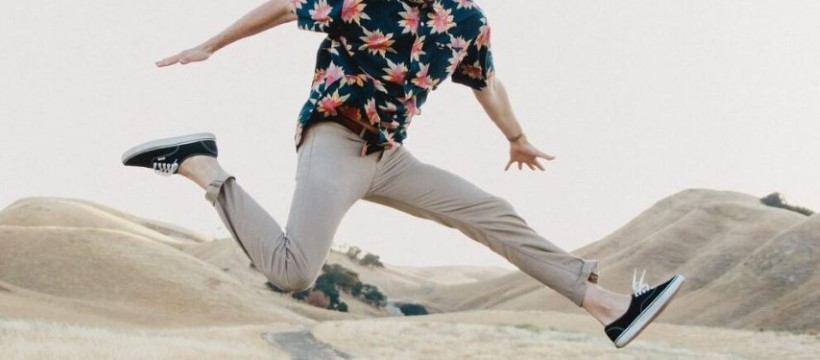The Supreme Court of the United States (SCOTUS) recently gave hundreds of “student-athletes” hope by upholding a lower court’s decision that “the NCAA was violating antitrust law by limiting the education-related benefits that schools can provide to athletes.” In other words, the Supreme Court upheld the decision that “the NCAA was limiting the educational benefits that schools could provide to athletes.”
The United States Supreme Court ruled 9-0 in favor of former college running back Shawne Alston and the rest of the plaintiffs, with Justice Brett Kavanaugh eviscerating the NCAA’s business practices in a separate opinion that concurred with the majority opinion.
The NCAA’s current business model, which classifies student-athletes as amateurs and prohibits them from receiving financial compensation for their athletic activity, has taken a significant hit as a result of the Supreme Court’s decision. Athletes, for example, are not permitted to earn a wage or receive any additional benefits as a result of their athletic status.
This rule is related to the concept of amateurism, which states that players participate in NCAA competitions “for the love of the game” rather than for financial gain. The NCAA forbids athletes from being compensated for their participation. The official name for these people is “Student-Athletes,” and the NCAA’s lengthy rulebook refers to them as “Student-Athletes.” They have been “compensated” with a college scholarship and a “valuable college education.”
Several states, however, have realized that the students themselves are getting lost in the shuffle of collegiate sports commercialization (the NCAA generated $1.18 billion in revenue in 2019), and they have attempted to rectify this situation by passing bills that allow athletes to generate revenue off of their name, image, and likeness. In 2019, the NCAA earned $1.18 billion in revenue. (NIL).
In fact, by the first of July 2021, at least five states will have enacted legislation allowing students to profit from their NILs, with more states following closely behind. Students will be able to license their likenesses for use in products such as clothing, video games, and other consumer goods under these laws. It is important to note that these measures do not advocate for students to be paid a salary or stipend; rather, they simply allow students to profit from their NILs. The recent decision by the United States Supreme Court broadens the way in whichhow students can include a variety of expenses when calculating the cost of their undergraduate education; however, it does not allow players to be “paid to play,” as the practice is more commonly known. However, the combination of state-level legislation and the eagerness to change the NCAA’s business model will, in the end, put an end to the “amateurism” that exists in collegiate athletics and kickstart a new push toward paying players fairly for their services.
Because of this shift toward more equitable compensation, more athletes should choose to spend four years at a collegiate baseball program rather than immediately entering the minor league system. The college will allow athletes to develop in a friendlier, more comfortable environment than the minor leagues, which will change the way teams approach drafts and player development, significantly changing the Major League Baseball player landscape (and your Dynasty team for the better).
Minor League Baseball and Its Organization
The Minor League Baseball (MLB) system allows big-league clubs to control each player’s development while also allowing batters and pitchers to make changes to their skills in a low-pressure setting. Even hitters like Bryce Harper, who were deemed the readiest for the major leagues on draft day, require time to adjust to the higher level of competition in the minor leagues and major leagues. Because 99.999 percent of all prospects require some level of minor league experience, the minor league system is critical for player development.
The issue with Minor League Baseball is that players are not regarded as legitimate employees of the clubs, but rather as individuals who should be content with simply playing baseball. According to the website Advocates for Minor Leaguers, the average yearly income for a Triple ATriple-A player in 2019 was only $10,040, which is approximately $2,000 less than the federal government’s definition of poverty. It gets worse as you move down the ladder;
Class-A players only earn $6,000 per year for their efforts. It is not uncommon for minor league players to work other jobs to make ends meet financially. On the other hand, it’s not like these athletes are getting a lot of extra benefits. Given the frequency with which events like this occur, it is clear that per diems on road trips do not even come close to covering the basic player expenses:
To our great relief, executives from the Baltimore Orioles “stepped in” to help players cover some of the costs:
Several minor league players have not received any payment since at least the beginning of the year 2020. The major league clubs, which generate millions of dollars, decided that paying their minor leaguers’ “salaries” when there were no minor league games to play would be too much of a hassle. Some players in the Minor League Baseball (MiLB) system earned as little as $5,800 during the 2019 and 2020 seasons, which is insufficient to support themselves.
As many of us can attest, financial difficulties can have a significant negative impact on one’s mental health because they can affect personal relationships, mood levels, and even material items like food, clothing, and shelter. This is particularly true. It is difficult for an athlete to grow into the best version of themselves when they are also concerned about how they will pay their bills and put food on the table.
The enormous promise of playing professional baseball is simply insufficient to keep athletes from going hungry at night, sleeping in their cars, or losing sleep due to second jobs or financial stress. This is a problem in a sport with a long history of player exploitation. The competition is undeniably beneficial for honing one’s skills, but it may be difficult to improve one’s skills to the point where they are adequate for hitting big-league pitching when there are numerous other sources of stress present.
Certain players, particularly those selected in the first round of the draft, can support themselves financially while playing in the minor leagues thanks to their draft bonuses. Players selected in the first two rounds of the Major League Baseball draft are eligible for one-time signing bonuses of up to one million dollars. However, as teams progress beyond the fourth or fifth round, athletes begin to sign for one-time bonuses that will not cover more than a couple of years’ worth of living expenses in minor league baseball. Furthermore, because players must send money back home to support their families, the bonus covers an even smaller portion of the players’ costs.
According to an in-depth investigation conducted right here on PitcherList, collegiate players selected in the first hundred picks take an average of three years to make it to the major leagues. High school (prep) players selected in the first hundred rounds of a draft take an average of four years to make it to the major leagues. If we assume that the top one hundred players are fortunate enough to keep their entire draft bonus and not have to use it for anything other than living expenses, then that amount of money may be enough for players to survive until they reach the major leagues (if they even reach it). However, this is not always the case, and the athlete may discover that the money received from the draft is insufficient to secure their financial security shortly.
As draft bonus money diminishes, it becomes even more difficult for players selected in later rounds to make ends meet and support themselves. Furthermore, these players typically spend more time in the minor leagues than their peers in the top 100. In comparison to top-100 players, who are usually closer to being ready for the major leagues on draft day, they frequently need to spend more time honing their baseball skills. All of this is based on the assumption that these draftees will eventually reach the promised land of a minimum salary in the major leagues. This goal is extremely difficult to achieve because only a small percentage of players drafted have a chance of making it to “The Show,” let alone performing well enough to stay there. Take, for example, Billy Beane:
More players attending college would be advantageous
What if athletes spent a larger portion of their formative years playing baseball at the collegiate level? What if, instead of going straight from high school to the minor leagues, where living conditions can be quite poor, athletes decided to spend four years at a university first, followed by a brief stint in the minor leagues? This would be an enormous improvement over the current situation. It has the potential to help develop more players to their full potential and prepare them to compete in the major leagues.
Students will undoubtedly benefit from the Supreme Court of the United States’ decision to allow unlimited benefits to “student-athletes,” as long as those benefits are related to educational costs. Students can now receive school-provided compensation in the form of computers, tutoring, and other services to assist them with their studies and, as a result, alleviate some of the financial strains they are experiencing. Even though the NCAA can still allow schools to limit the distribution of Lamborghinis to players, the ruling can still benefit athletes who need fundamental materials for their studies but cannot afford them.
Furthermore, the new rules allowing collegiate athletes to earn money from their name, image, and likeness should help athletes significantly improve their financial situations. Because the laws allow athletes to sell merchandise bearing their name, image, and likeness, this is the case. As a result of these newly enacted laws, athletes will be able to use their following (for example, their social media impact) to make money while still enrolled in college.
According to an ESPN study, “All-American Athletes” such as Zion Williamson, Trevor Lawrence, or, in the case of baseball’s Jack Leiter, can use their massive followings to earn up to $1 million per year while still attending school. And, while $1 million may appear to be a lot of money for a college baseball player, even a superstar like Kumar Rocker or Leiter, any money earned on top of their scholarships is money they did not have before. Even if the sum is only a few hundred dollars, this is true.
One of the disadvantages of these new NIL bills is that they favor superstar players in general. For example, if you have even a passing interest in the Major League Baseball draft class of 2021, you are aware of the name Jack Leiter. However, there is a good chance that you are unfamiliar with picking number 30, let alone picking number 300.
These players are unlikely to have a large following, either on social media or elsewhere, and thus are unlikely to earn anywhere near the same amount of money from their name, image, and likeness as Leiter, Rocker, or one of the other top-10 picks. Naturally, the financial situation would be comparable to that of other professional sports, in which the most popular athletes earn the most money both on and off the field of play.
Conclusion
Baseball at the collegiate level cannot be considered a suitable replacement for the lower league development structure. Players will eventually outgrow their opponents and have nothing more to show for their time in college. As a result, the two systems will likely have to coexist in the future.
The best option would be to strike a balance between increasing minor league funding and strengthening the network of collegiate baseball programs. Because players are thought to be more finished products when they leave college, they spend less time in the minor leagues and can contribute to their major league clubs sooner. Because both the minor league development process and the university baseball system are necessary for preparing players for the major leagues, having a good collegiate baseball system does not completely replace the minor league development process.
However, if the minor league baseball system remains in place, every high school player should seriously consider playing baseball in college. College athletes will see a reduction in the costs of attending a reputable institution, as well as the opportunity to earn more money while training at top-tier facilities. Many of the advantages of going straight to the minor league system are outweighed by this opportunity. This system will not work for everyone — those without a choice, as well as those with the talent to move quickly through the minor league system, will rightfully choose the immediate draft money — but it will work for a larger portion of athletes beginning in 2021 and beyond, making the decision between college baseball and the minors a little easier.
Of course, Major League Baseball can put an end to this debate once and for all by simply paying its players a living wage, but that is a topic for another time.



